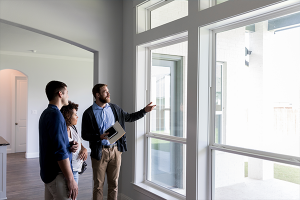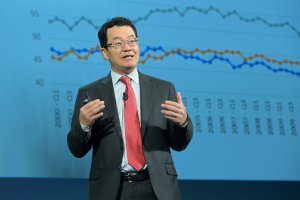References
NAR Library & Archives has already done the research for you. References (formerly Field Guides) offer links to articles, eBooks, websites, statistics, and more to provide a comprehensive overview of perspectives. EBSCO articles (E) are available only to NAR members and require the member's nar.realtor login.
“Businesses benefit when buildings are built sustainably – operating costs decrease, payback periods are shorter and asset values can increase. It’s important to note that healthier indoor environments are just as much of a motivator for sustainable building, too.” (Buildings, May 1, 2019) E
Sustainability Information From the National Association of REALTORS®
- Sixteen percent of respondents reported that their Commercial Information Exchange (CIE) had green data fields, and the CIE green data fields were used to promote energy information and green features.
- A majority of agents and brokers (71 percent) said that energy efficiency promotion in listings was very or somewhat valuable.
2022 REALTORS® & Sustainability: Commercial Report (National Association of REALTORS®, Jul. 2022, p. 6-8)
What Is a Green Building?
What is a Net Zero Energy Commercial Building – and Why Should It Be on Your Radar? (Building Engines, May 24, 2022)
Commercial buildings that produce a surplus of energy over the year are referred to as energy-plus buildings. Likewise, commercial buildings that consume slightly more energy than they produce are near-zero energy buildings. You may also hear these commercial buildings referred to as ultra-low energy buildings.
Green Building Design Ideas for Your Commercial Space (Iskalo, May 2, 2022)
Natural ventilation methods, such as solar heating or thermal mass cooling, use passive systems, rather than mechanical, to supply outdoor air to a building’s interior for ventilation and cooling. Natural ventilation allows the outside weather to provide low humidity and moderate temperature wind currents as an alternate heating and cooling source. They provide the most comfortable and energy-efficient environment for employees and other building occupants.
How the Commercial Real Estate Sector is Building a Greener Future (GreenBiz, Jan. 27, 2022)
This ties into the evolving idea of a "best-in-class building." The focus is shifting from being in a prime location with sweeping views from the top floors, to championing net-zero carbon, promoting health and wellbeing, and being resilient to climate change.
How Office Owners are Achieving Net Zero Goals (WealthManagement.com, Apr. 29, 2021)
“Any existing building’s carbon emissions can be reduced, and the first step is to understand its current level of performance,” says Elizabeth Beardsley, senior policy counsel for the U.S. Green Building Council (USGBC). She adds that this requires metering and reviewing utility bills and any other available building performance data that can help identify areas in need of increased operational efficiency and performance.
The Green Buildings Market
Record-Breaking Year for Green Leasing in Commercial Buildings (Institute for Market Transformation, May 18, 2022)
This year’s Green Lease Leaders represent portfolios totaling nearly two billion square feet (sq. ft.) and comprise a diverse range of buildings from large and small commercial offices to data centers and industrial and multifamily buildings. The cumulative floor area of all Green Lease Leaders is now five billion sq. ft. of building space.
New Demand for Sustainability in Commercial Real Estate: What are the Benefits of Sustainable Commercial Real Estate? (Stance Commercial Real Estate, Nov. 23, 2021)
As we move into post-pandemic times, the workplace is changing. Companies are looking for sustainable and environmentally conscious CRE, more efficient workspaces, and hybrid spaces that encourage productivity. Investing in sustainable CRE will result in long-term cost savings. However, it will also result in greater profitability, resulting in higher rents, lower-cost financing, tax benefits, and discounts on insurance premiums.
As Risks of Climate Change Rise, Investors Seek Greener Buildings (The New York Times, Oct. 26, 2021)
The most important use of this technology is likely to be in evaluating and retrofitting existing buildings. Fund managers will need to understand which ones can be updated to met new standards and regulations and which ones are likely to become stranded assets, an increasingly tricky calculation as building technology matures.
'Cool’ Roofs, Cooler Designs as the Building Industry Embraces Energy Sustainability (The Washington Post, Jun. 8, 2021)
In Mazria’s view, building “green” is not a hard sell, especially given cost-effective design approaches that can produce high-performance buildings with little to no energy consumption or emissions. Strategies include considering a structure’s shape and orientation on a site, adding “cool” roofs that reflect more sunlight and absorb less heat, and more. “In 50 years, I’ve never heard a client say they want an inefficient building that costs more to operate and damages the environment,” Mazria said.
Converting Existing Buildings to Green
'Living Building' Opens in Portland's Old Town Neighborhood (KGW, Jun. 20, 2022)
The roof is covered in solar panels that will generate power for the entire building. Back down in the basement, there is a room full of rechargeable batteries that Schwer says is the equivalent of three Tesla cars. The building will generate more energy than it needs, making it a net energy producer.
Amid Soaring Demand for Warehouses, an Effort to Make Them Greener (The New York Times, Apr. 12, 2022)
Warehouses and distribution centers — which typically have big, open interiors devoted to storage with a small amount of square footage dedicated to office functions — would appear to be easier to make greener than other real estate. Many of them take only a modest amount of energy to run, compared with more densely occupied structures such as office buildings or hotels.
Building Retrofits: the Key to Commercial Real Estate Achieving Net-Zero Emissions (Forbes, Mar. 7, 2022)
Retrofitting can be a costly process up front, but upon completion, building owners will start to see immediate savings. With new, streamlined technology, working at optimal performance, owners will more than recover the hefty initial costs.
What The Empire State Building's Switch To Wind Power Tells Us About Sustainability In NYC (Forbes, May 4, 2021)
In January, the Empire State Realty Trust (ESRT), which owns the skyscraper and 13 other office buildings in the city, became the nation’s largest real estate user of fully renewable energy when it signed multi-year wind power contracts with Green Mountain Energy and Direct Energy. In total, these contracts are expected to provide 300 million kilowatt-hours of electricity across 10 million square feet of New York real estate — enough to light every home in New York State for a month.
Green Building Trends & Case Studies
California Removes Incentive to Use Natural Gas in New Buildings (Bloomberg.com, Sep. 15. 2022) E
California regulators on Thursday took away a key incentive for builders to use natural gas in new homes and commercial buildings as the state seeks to reduce greenhouse gasses and reach its climate goals.
How Green is the Office Space in Your City? (Coldwell Banker Commercial, Aug. 16, 2022)
It’s exciting to see green office space becoming an important topic in real estate and to investors and developers. In time, hopefully other cities will commit to greener buildings, following the lead of Washington D.C., San Francisco, and Chicago as the greenest cities in the U.S.
World Green Building Trends 2021 (Dodge Construction Network, 2021)
Well over 90% of owners, investors, architects and engineers have consistently reported the belief that their new green buildings have higher asset values than traditional buildings. 2018 saw a notable increase in the share of owners/investors who reported that increase was for more than 10%, and the 2021 findings sustain that growth.
How to Build Smart, Zero Carbon Buildings - and Why It Matters (World Economic Forum, Sep. 8, 2021)
A recent study suggests that Grid-interactive Efficient Buildings (GEBs) can reduce energy costs by up to 20% through active demand management. Energy optimization can control a building’s energy use based on the real-time carbon intensity of the grid and coordinate the use of clean heating resources with backup fossil fuel equipment to minimize carbon emissions on a 24/7 basis while providing demand flexibility and resilience.
See Inside Utah’s First ‘Living Building’ — Can This Approach Help Save the World? (The Salt Lake Tribune, Sep. 6, 2021)
In addition to being net positive on electricity and lowering water consumption by nearly 80%, the Arch Nexus project is also novel among living buildings as a renovation as opposed to being built new — taking advantage of an axiom in the adaptive reuse of existing structures that “the greenest building is one that is already built.”
Facing Severe Droughts, Developers Seek to Reuse the Water They Have (The New York Times, Aug. 4, 2021)
Commercial real estate is “where the balance of the pendulum” is for water conservation, said Paul O’Callaghan, the founder of BlueTech Research and a co-producer of the 2020 documentary “Brave Blue World: Racing to Solve Our Water Crisis.” Roughly a third of the water use in San Francisco, for instance, takes place in commercial buildings.
Green Building Certifications
Inside Our Headquarters: How We Achieved LEED Gold (Honeywell, Sep. 2022)
Additionally, the building benefits from predictive maintenance software powered by Honeywell Forge, which uses artificial intelligence (AI) and machine learning (ML) algorithms to predict early and proactive actions to avoid unnecessary changes, as well as reduce the amount of unplanned, reactive work on building systems.
How Green & LEED Standards Affect Your Commercial Real Estate (iOptimize Realty, Jun. 17, 2022)
Green buildings are generally more expensive. This is partly because they are generally equipped with more modern fixtures. Similarly, environmentally conscious buildings typically lean towards the state-of-the-art. On the other hand, alternative energy sources generally require more substantial upfront costs. Then, there is the cost of LEED or other standard certifications and recertifications. More funds are needed to keep the building up to code.
LEED vs. WELL Certifications: What’s the Difference? (Ryan Companies, Jan. 27, 2022)
WELL certified buildings allow occupants to feel confident that their health and wellness is being put first, which leads to healthier, happier and more productive communities.
BOMA 360 Performance Program (Building Owners and Management Association International)
Earning the prestigious BOMA 360 label demonstrates that a building is outperforming the competition across all areas of operations and management. Designees report the program helped them achieve operational efficiencies as well as higher levels of tenant satisfaction.
LEED Rating System (U.S. Green Building Council)
LEED (Leadership in Energy and Environmental Design) is the most widely used green building rating system in the world. Available for virtually all building types, LEED provides a framework for healthy, highly efficient, and cost-saving green buildings. LEED certification is a globally recognized symbol of sustainability achievement and leadership.
LEED Zero (U.S. Green Building Council)
LEED Zero represents a new level of achievement in green building that is not just attainable but is the goal of LEED certified projects around the world.
Green Commercial Finance
C-PACE: At the Intersection of Real Estate and Sustainability (Connect CRE, Sep. 22, 2022)
C-PACE will help to bridge the gap between institutional real estate investors and their sustainability goals. C-PACE gives borrowers low-cost, long-term, fixed-rate, flexible financing in exchange for making clean energy and water efficient improvements to projects. Developers and property owners appreciate an alternative financing option that is structured to help them meet sustainability goals, attract, and retain tenants, and improve their projects’ bottom-line.
Green Bond (Investopedia, Sep. 21, 2022)
A green bond is a fixed-income instrument designed specifically to support specific climate-related or environmental projects.
Harvard Issues First-Ever Green Bonds to Finance Campus Construction Projects (The Harvard Crimson, Apr. 29, 2022)
The borrowing marks the first time an outside firm has verified the University’s compliance with the 2021 Green Bond Principles, a global framework that encourages environmental sustainability and development in debt capital markets.
Building for the Future: Are Developers Going ‘Green?’ (Goldman Sachs, Apr. 20, 2022)
Real estate is an asset class that typically can carry leverage given the predictability of cash flows. From their inception in 2007, issuance in what we call “green bonds” has swelled to more than $375 billion, and that growth is really important for this space. In the U.S., real estate companies are now one of the largest corporate sectors for green bond issuance.
The Wait is Over: C-PACE Finally Goes Live in NYC (The Real Deal, Jun. 15, 2021)
Property owners can retroactively tap the financing tool to secure a lower interest rate for work already done on projects like adding LED lights, upgrading insulation or installing solar panels on buildings. C-PACE financing can also replace existing debt that building owners took on to make these energy-savings improvements.
How Green Are Green Bonds? (KelloggInsight, Jun. 9, 2021)
When investors evaluate an investment in a traditional, not-green bond, they consider whether they will receive an adequate return on their investment to compensate for the credit risk of the issuing company. However, green bonds are different. Here, investors should also evaluate the environmental impact of their investment—and critically, whether the proposed green investment would have been undertaken even if they were not to provide funding.
Useful Websites
Penn State Center for Green Roof Research — The Center, the only location in North America with small test green roofs on replicated buildings, characterizes and quantifies the performance of green roofs and promotes their discoveries through education and outreach.
Building Green — Our focus is on helping you design and build from a whole-systems perspective. We support teams that use an integrative process that reduces ecological impact—or even provides regenerative support for ecosystems—and that maximizes return on investment, both financially and in benefits to occupants.
ENERGY STAR Commercial Buildings — When you achieve Designed to Earn the ENERGY STAR, you get access to a suite of marketing materials to help you distinguish your building as designed to be a top energy performer … meaning it will use less energy, cost less to operate, and generate fewer greenhouse gas emissions than a similar building.
Greenroofs.com — Updated daily, Greenroofs.com is a dynamic interactive website, online media company, vibrant social network, and comprehensive resource Connecting the Planet + Living Architecture promoting People, Projects & Solutions.
U.S. Green Building Council (USBGC) — The USBGC, the leading organization for green building in the U.S., administers the LEED (Leadership in Energy and Environmental Design) Green Building Rating System®. Their website features information on LEED certification, publications, information on workshops and other events, and more.
To search the U.S. Green Building Council’s membership community of over 12,000 business, organizations, and government offices that support green design, check out their Organizations Directory.
World Green Building Council — Green Building Councils are independent, non-profit organisations made up of businesses and organisations working in the building and construction industry. As members of WorldGBC, they work to advance green building in their own countries, as well as uniting with other Green Building Councils to achieve environmental, economic and social goals on a larger, global scale.
Green Building Initiative — A 501c3 nonprofit organization, the GBI is dedicated to accelerating the adoption of building practices that result in energy-efficient, healthier and environmentally sustainable buildings.
eBooks & Other Resources
eBooks.realtor.org
The following eBooks and digital audiobooks are available to NAR members:
Green Building Through Integrated Design (eBook)
Green Buildings A to Z (eBook)
How to Design and Build a Green Office Building (eBook)
Land Use Law for Sustainable Development (eBook)
Retrofitting Office Buildings to Be Green and Energy-Efficient (eBook)
Books, Videos, Research Reports & More
As a member benefit, the following resources and more are available for loan through the NAR Library. Items will be mailed directly to you or made available for pickup at the REALTOR® Building in Chicago.
Routledge Handbook of Sustainable Real Estate (Abingdon, Oxford: Routledge, 2018) HD1390 .R684 2018
The Green Building Revolution (Washington: Island Press, 2008) TH880 .Y634 2008
The Philosophy of Sustainable Design: The Future of Architecture (Kansas City, MO: Ecotone Publishing, 2004) NA 2542 M35
Green Buildings Pay (London: Spon Press, 2003) NA 2542 G72
Have an idea for a real estate topic? Send us your suggestions.
The inclusion of links on this page does not imply endorsement by the National Association of REALTORS®. NAR makes no representations about whether the content of any external sites which may be linked in this page complies with state or federal laws or regulations or with applicable NAR policies. These links are provided for your convenience only and you rely on them at your own risk.












